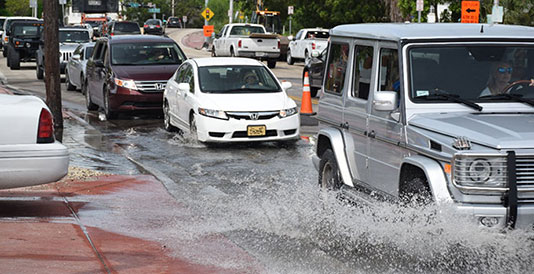 April 6, 2016 - A new University of Miami (UM) Rosenstiel School of Marine and Atmospheric Science-led study found that Miami Beach flood events have significantly increased over the last decade due to an acceleration of sea-level rise in South Florida. The researchers suggest that regional sea-level projections should be used in place of global projections to better prepare for future flood hazards in the region.
April 6, 2016 - A new University of Miami (UM) Rosenstiel School of Marine and Atmospheric Science-led study found that Miami Beach flood events have significantly increased over the last decade due to an acceleration of sea-level rise in South Florida. The researchers suggest that regional sea-level projections should be used in place of global projections to better prepare for future flood hazards in the region.
To quantify the flood hazard in Miami Beach, the UM Rosenstiel School researchers analyzed tide and rain-gauge records, media reports, insurance claims, and photos of flooding events on Miami Beach and in Miami since 2006. The insurance claims and media reports helped the researchers pinpoint the date and type of flood events.
“Our results show that the effect of sea-level rise is real and affecting the daily life of people living in low-lying coastal communities, such as Miami Beach,” said Shimon Wdowinski, UM Rosenstiel School research professor of marine geosciences, and lead author of the study.
The results showed that the flooding frequency in Miami Beach has significantly increased after 2006 mainly due to increasing number of high-tide flooding events. The increased flooding frequency coincides with acceleration in the rate of sea level rise in South Florida. The average rate of sea-level rise increased by 6 millimeters per year over the last decade - from 3 millimeters per year before 2006 to 9 millimeters per year after 2006.
The study’s additional co-authors are Ronald Bray and Ben P. Kirtman from the UM Rosenstiel School; and Zhaohua Wu from Florida State University.
Ocean & Coastal Management Journal Article
Photo Credit: Shimon Wdowinski, Ph.D.











